The Evolution of Flight in Pterosaurs
Origins and Early Evolution
The earliest known pterosaurs, such as Eudimorphodon ranzii, date back to the Late Triassic period, approximately 230 million years ago. These early pterosaurs were small, with wingspans typically less than 1.5 meters. They had long tails, and their wings were formed by a membrane of skin, muscle, and other tissues stretching from the ankles to a dramatically lengthened fourth finger.
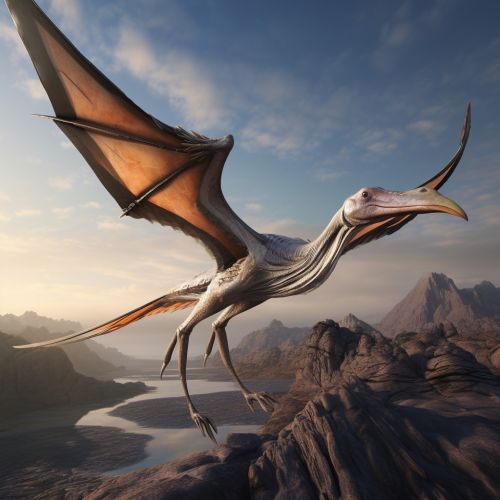
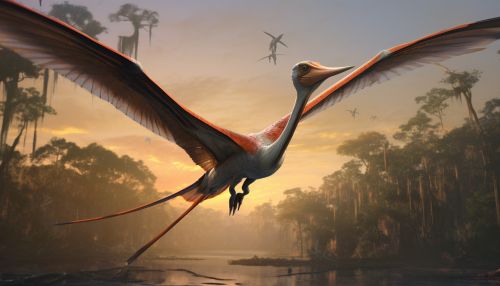
Anatomical Adaptations for Flight
Pterosaurs were the first vertebrates to evolve powered flight, not just gliding. They achieved this through several unique anatomical adaptations. The most obvious of these is the wing structure. Unlike birds and bats, which have wings formed by a membrane of skin stretched between elongated fingers, pterosaurs had a flight membrane that was attached to a single, greatly elongated fourth finger. The other three fingers were short and clawed, and used for walking and possibly for grasping prey.
The pterosaur wing membrane, or ptagium, was a complex, multi-layered structure. It included layers of skin, muscle, and fibrous tissue, and was reinforced by closely spaced fibers called actinofibrils. The ptagium extended along the body, from the fourth finger to the ankle, and even included a small 'flap' over the hindlimbs, known as the uropatagium.
Pterosaurs also had a number of skeletal adaptations for flight. Their bones were hollow and air-filled, like those of birds, reducing their weight. They had large, powerful wing muscles, and their shoulder joints were oriented so that the wings could be flapped almost vertically, which is efficient for flight. The pterosaur pelvis was also adapted for flight, with a large surface area for the attachment of flight muscles, and a structure that allowed for a powerful downstroke of the wings.

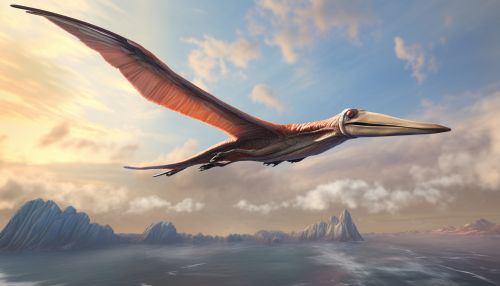
Evolution of Flight Styles
Over the course of their evolution, pterosaurs developed a variety of flight styles, related to their size and ecology. Early pterosaurs were likely capable of both powered flight and gliding. As pterosaurs evolved into larger forms, such as the Late Jurassic Pterodactylus, they likely became more efficient at soaring and gliding, using thermals to gain altitude.
The largest pterosaurs, such as the Late Cretaceous Quetzalcoatlus, with wingspans of up to 10 meters or more, were likely high-aspect-ratio soarers, similar to modern albatrosses. These giant pterosaurs probably spent much of their time aloft, over oceans, using dynamic soaring techniques to travel long distances with little effort.


Evolution of Wing Shape and Size
The shape and size of pterosaur wings varied greatly throughout their evolution, reflecting adaptations to different modes of flight. Early pterosaurs had relatively short, broad wings, suitable for maneuvering in cluttered environments like forests. As pterosaurs evolved into larger forms, their wings became longer and narrower, better suited for soaring and gliding.
The largest pterosaurs, such as Quetzalcoatlus and Pteranodon, had extremely long, narrow wings, with a high aspect ratio. This wing shape is efficient for soaring and allows for long-distance travel. It is seen today in birds such as albatrosses and frigatebirds, which spend much of their lives aloft.
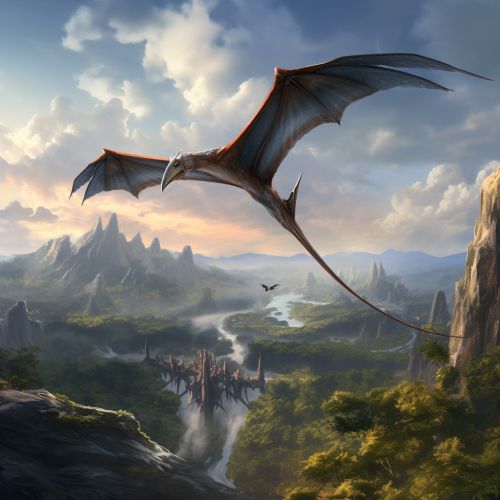
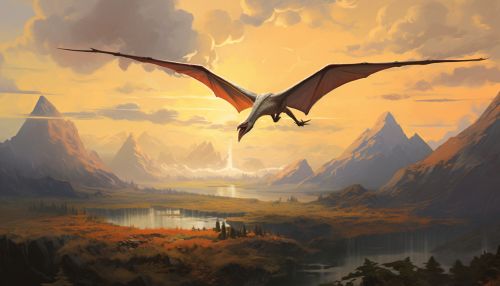
Conclusion
The evolution of flight in pterosaurs was a complex process that involved numerous anatomical adaptations and changes in flight style. From their origins in the Late Triassic to their extinction at the end of the Cretaceous, pterosaurs evolved from small, agile fliers into the largest creatures ever to take to the skies.
